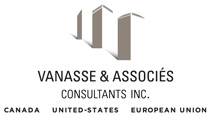Customs, Customs Compliance and Reasonable Care
Customs compliance is an everyday activity. There is no accreditation, certification or diploma in customs compliance.
- Complete import and/or export diagnostic (including audit) of transactions and company management at the head-office, affiliates, branches an/or distributors level, followed by a report containing our observations and recommendations
- Accompany customers in their efforts to be compliant or in the implementing of corrective measures
- Management and planning
- Strategic monitoring
- Customs formalities and documentation (preparation and presentation support)
- Harmonized tariff classification (Harmonized system number of ICC – HS): revision and classification
- Determination of country of origin: applying the “Made in…” regulations
- CUSMA (Canada – United States – Mexico Agreement, July 1st 2020)
- CETA (Comprehensive Economic and Trade Agreement) Canada – European Union, September 21, 2017
- Customs rules of valuation (valuation for duty)
- Customs rules of valuation (valuation for duty) regarding “related and non-related” parties
- Customs Programs and compliance including:
- In Canada: Administrative monetary penalty system (AMPS)
- In United States: Informed Compliance
- World Trade Organization (WTO) – and SAFE/AEO
- Reasonable Care
- Traceability
- Compliance to Marking and labelling rules
- Customs compliance and management of the national and international supply chain
- Procedures and Processes
- Roles and responsibilities of suppliers and intermediaries
- Accompany customers in follow-ups with the appropriate customs authorities, either in the « planning » process or in the event of non-compliance
- Security: PIP (in Canada) – and/or C-TPAT (in the United States) : support (coaching) and enterprise training
- Import and/or export controls including Quota Management
- Record keeping
- Maintaining documents and records-keeping
- Drawback claiming
- Conferences, enterprise training and support (coaching)
Customs Compliance and Traceability: A Question of Management Activities
- In 1994 when U.S. Customs and Border Protection (USCBP) launched their Informed Compliance program they stated “A well managed business represents a minimum risk”; Canada followed suit in 2002 with its Administrative Monetary Penalty System (AMPS).
- On June 24th 2005, the council of the World Customs Organisation (WCO) adopted the SAFE Framework of Standards to Secure and Facilitate Global Trade (SAFE Framework). This program acts as a deterrent to international terrorism and crime, counterfeiting and all other criminal activities while securing revenue collections and promote trade facilitation worldwide.
- While considering the main factors of the American program C-TPAT and before issuing the status of Authorized Economic Operator (AEO), customs authorities of member countries focused their attention to the financial solvability and customs compliance of applicants.
- Since 2001, within the Customs Self-Assessment program (CSA) and, since 2002 within the C-TPAT program and even more intensely since 2007, CBSA insists on “traceability” for the application and/or admissibility of all programs, determination of origin, NAFTA, records keeping, etc.
- On January 1st 2008, the European Union (EU) launched its SAFE program.
- In all customs matters, the importer and/or the exporter always carry the “burden of proof” meaning: take all necessary measures to clearly demonstrate to the customs authorities that they applied “reasonable care” rules.
- 2018 – FDA’s Food Safety Modernization Act (FSMA)
At Vanasse & Associés, THE DIFFERENCE, clearly the UNIQUE ASPECT of our enterprise is found at all levels of our interventions:
- Enterprise management
- Supply Chain and logistics management
- Customs programs and compliance management
- Management of traceability for “all goods and services” within the globalisation of exchanges and trade.
Thérèse Vanasse, CEO, is a registered user of the NEXUS program. In 2022, she will again qualified to all security verifications required by the U.S.A and Canada under that program. She can surely serve you ‘in all security”.

